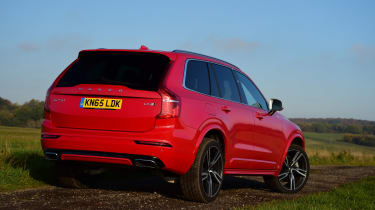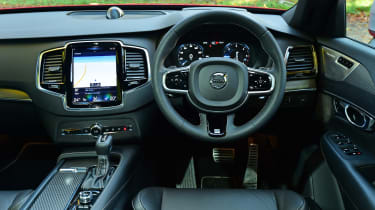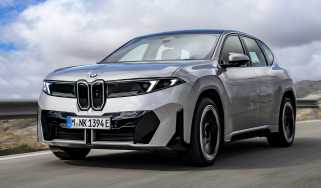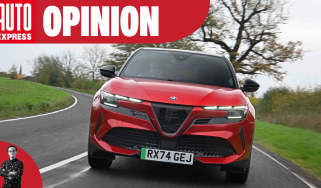Volvo XC90 R-Design review
Racy trim level gives our Car of the Year, the excellent Volvo XC90, a sharper look

Upgrading to a sportier trim usually means you get sharper styling at the expense of driving comfort. However, the Volvo XC90 R-Design manages to look sporty and is nearly as comfortable as the standard model – in spite of its larger wheel and tyre combination. The newcomer is expensive, at almost £50,000, but if you want a sporty-looking, spacious SUV with reasonable running costs, it’s well worth considering.
Manufacturers know that sport sells, and buyers wanting a racier look for their new car are well catered for. While some makers hang their sport trims on the coat tails of performance models, Volvo hasn’t got that luxury. But that doesn’t stop it from offering its sporty R-Design trim across the range, including on the new Volvo XC90 SUV.
Like other R-Design models in the line-up, the XC90 gets unique styling touches inside and out. There are matt-silver wing mirrors, a subtle bodykit, a gloss-black grille and matt trim around the grille and windows.
You also get a set of 20-inch alloys wrapped in low-profile tyres, while full LED headlamps are still a talking point of the design. The result is an imposing SUV, especially in vivid Passion Red paint – exclusive to R-Design trim.
Climb inside, and you’re not left wanting for kit. The stylish cabin is boosted by R-Design-branded electric leather seats and two-zone climate control, while the Volvo’s smart touchscreen with sat-nav adds to the minimalist look.
Used - available now
There’s a leather steering wheel and gearlever to mark the car out, too, but as soon as you hit the road, it’s clear this model is no more performance-orientated than the standard model.
We tried the D5 diesel, and while it’s quick enough, the 222bhp four-cylinder engine makes itself heard when pushing on and disrupts the tranquil cabin. A Dynamic setting firms up the suspension and sharpens the engine and gearbox response, but as the XC90 is such a big car, body roll is still an issue in corners.
Plus, while the steering is firmer, it doesn’t offer much in the way of feedback. There are shift paddles if you want to take manual control of the eight-speed auto, yet you’ll soon find it’s easier to let the electronics do the work.
The Volvo is better in Comfort mode, and although the low-profile tyres do add extra road noise and make the ride firmer, it’s not uncomfortable. If you’re intent on saving fuel, Eco mode softens throttle response, yet this encourages you to press the pedal harder to get something out of it, which completely defeats the object of the setting.
Stick in Comfort mode, and the XC90 is a refined cruiser, while the sportier cabin hasn’t compromised the car’s practicality. You still get a seven-seat layout, and there’s plenty of space for all passengers, although the dark interior trim does feel oppressive.









